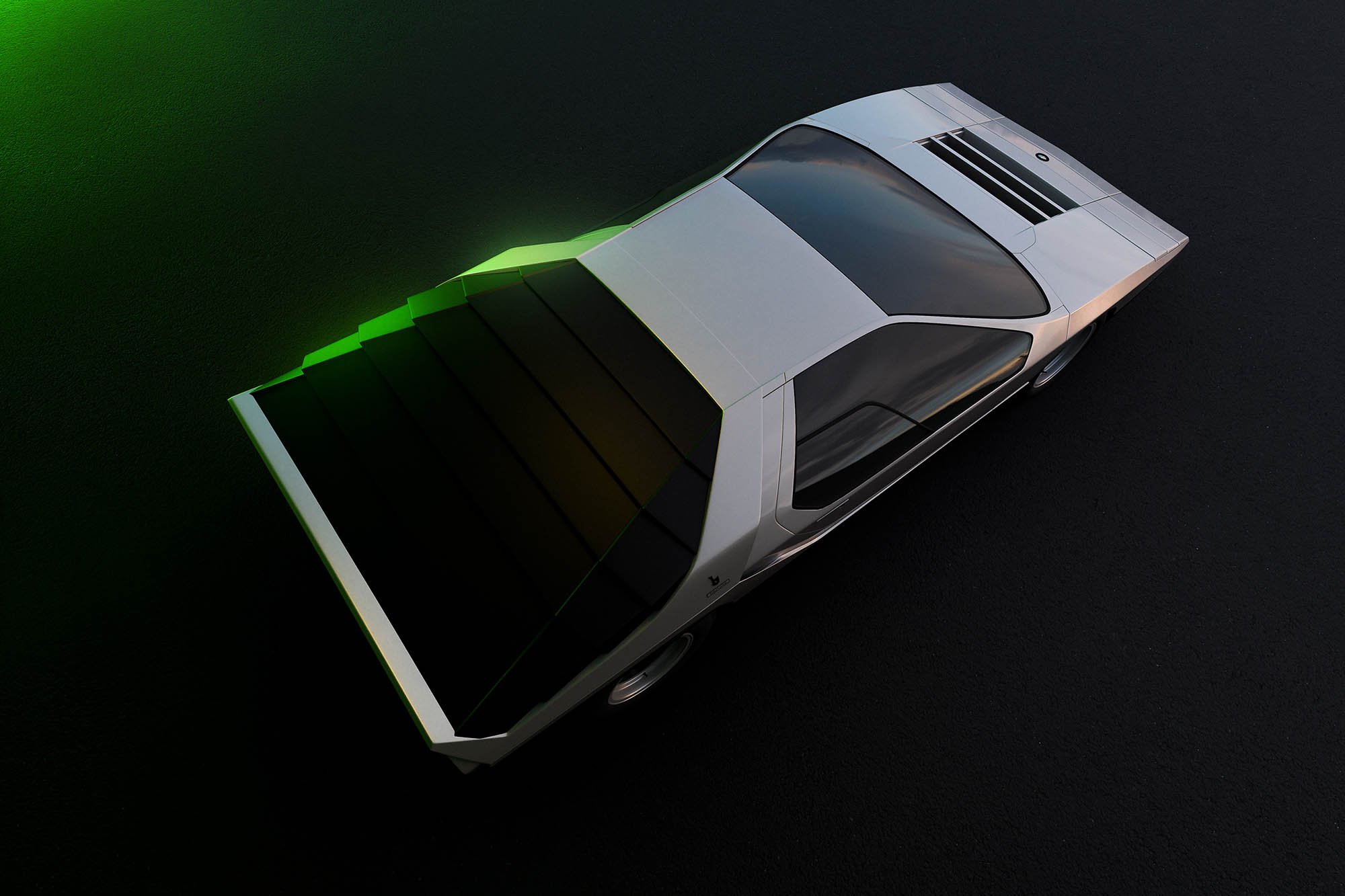Alfa Romeo's Carabo
Reinterpreting a work of art like the Alfa Romeo 33 Stradale is not easy, but Marcello Gandini succeeded and produced a masterpiece in the process. Totally different from the curvaceous coupé designed by Franco Scaglione, it was nevertheless equally important in the history and evolution of the sports car.
During 1968, a year after the reveal of the 33 Stradale, design studio Bertone entrusted a young Marcello Gandini with the task of integrating the superb mechanics of the 33 – with two-litre V8 engine in a central rear position – into a different and alternative bodywork for the sleek coupé designed by Scaglione.
Gandini devised a perfect wedge-shaped car with a low, streamlined profile and vertically opening doors. The low wedge-shaped line, retractable headlights and unconventional doors revolutionised the concept of the mid-engined supercar and remained a stylistic influence until the 1980s, thanks also to the contributions of two subsequent Gandini masterpieces: the Lancia Stratos Zero and the Maserati Khamsin.
The name Carabo derives specifically from the beetle Carabus auratus, which has the same iridescent green colour with golden reflections, just like the windows of the original Alfa Romeo car bodied by Bertone, while the profile of the orange bonnet resembled the legs and antennae of the colourful insect.
These beautiful renders are Frederick Unflath’s take on this legendary concept car. To see more of Frederick’s work as an automotive photographer and visual artist, click on the link below.
Photos © Frederick Unflath










